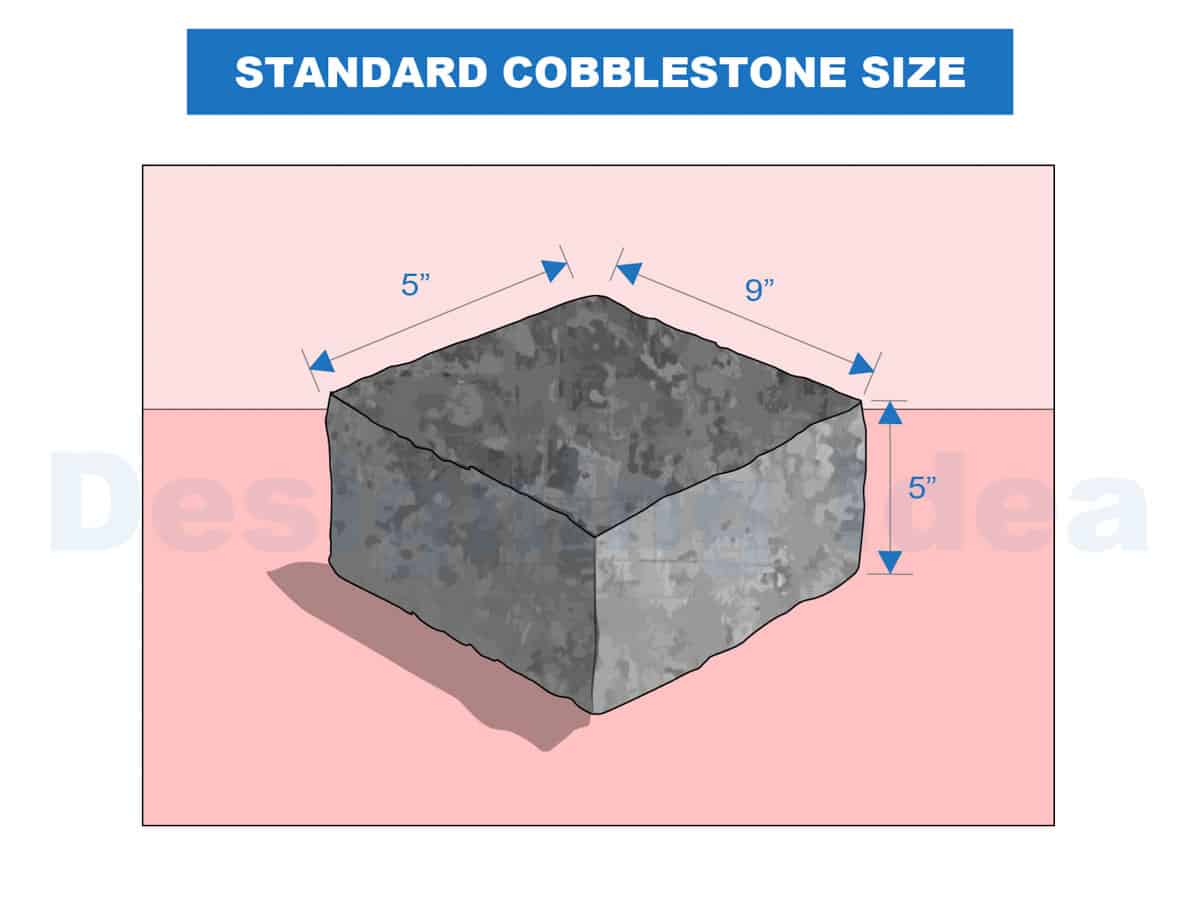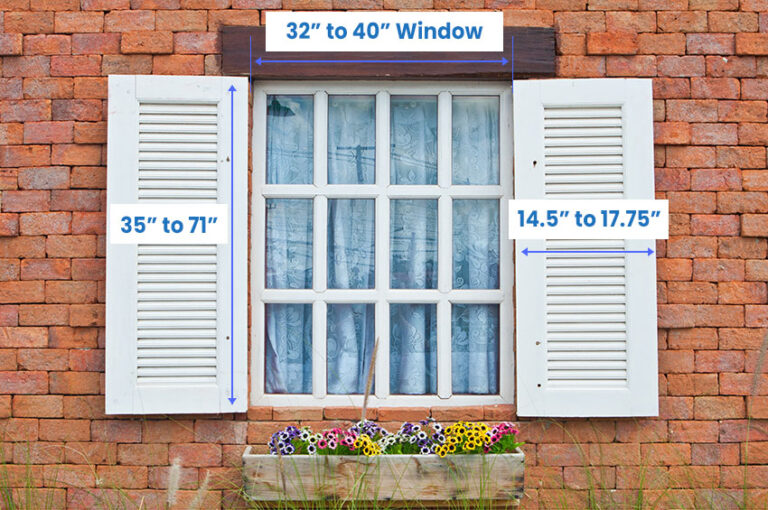7 Essential Tips for Choosing the Right Cobblestone Size

Homeowners have many options for paving driveways, walkways, and similar sections in the modern home. However, few can be as rustic, durable, and easy to maintain as cobblestones. Unsurprisingly, these materials are the go-to of many property owners, adding a touch of history to their homes. One question remains, though. What cobblestone size should go into your home?
Standard Cobblestone Size

On the other hand, fabricated cobblestones (mass-produced or “hand-chipped” stones) come in at least four sizes. These products range from boxy 4x4x4 inches (cobblestone cube) to 10x7x4 inches (Jumbo cobblestone).
The fourth cobblestone type is the mini block, measuring 4 inches across, 4 inches high, and 8 inches long. Hence, it sits between a cube and a regulation block, offering homeowners additional versatility.
According to Washington University in St. Louis (1), naturally occurring cobblestones formed by Mother Nature over millions of years range in size between 2.5 inches (about 6.4 centimeters) and 10 inches or 25.6 centimeters. Any rock or stone outside this range (smaller or larger) is not a cobble.
Cobblestone Measurements for Different Uses
- Driveways use larger 4-6 inch stones that withstand vehicle weight and movement without shifting or cracking.
- Walkways use smaller 2-4 inch stones that have a refined look and are comfortable for frequent foot traffic.
- Patios benefit from medium 3-5 inch stones that balance appearance and stability. Mixing sizes creates visual interest and a more rustic look.
- Garden paths use small to medium 2-4 inch stones that enable intricate patterns and accommodate curved shapes.
- Edging uses small under 3 inch stones or chunks to accentuate garden and grass boundaries without overpowering the landscape.
What is the Length of Cobblestone?
Manufactured (hand- or machine-chipped) cobblestones vary in lengths, depending on the classification. For example, a cube is 4 inches on all sides, translating to a similar length. You’ll need three cobblestones to cover a foot of driveways or pathway area. And if you have a hundred feet, you’re looking at about 300 units.
On the other hand, mini cobblestone blocks are twice as long as cubes (8 inches). These pavers can reduce the number of cobblestones needed to cover a 100-foot pathway from 300 to 150.
Authentic antique paving stones are available in three typical sizes – Mini (4″x5″x6″), Regulation (5″x5″x9″), and Jumbo (10″x7″x4″). Recently, half thickness versions were introduced as well, offering freight savings with double the square footage per truckload. The half sizes are Half Mini (4-6″x4-6″x2-3″), Half Regulation (5″x9″x2-2.5″), and Half Jumbo (10″x4″x3″) according to Real Goods Company (2).
Though the most common color is a mixed gray, pink stones and other colors are also sometimes available. The smaller mini and half mini sizes are suitable for walkways, patios and decorative borders, while the standard and jumbo sizes work well for driveways, parking areas, and commercial projects. The half thicknesses provide an appealing antique look at lower cost.
Regulation or standard blocks are an inch longer than mini versions at 9 inches, while jumbo sizes are also an inch longer than regulation cobblestones at 10 inches. These measurements allow you to cover a pathway with as few cobblestones as possible, while giving the section a rustic look.
How Thick is a Cobblestone?

For example, a 4×4-inch cobblestone cube can also be 2 and 3 inches thick, not only 4 inches.
Many landscape designers and driveway contractors often use alternating variable-sized pavers to create a “more natural” look. You could have a 4x4x4 cube in one section, a 4x4x3 in another, and a 4x4x2 next.
It’s a similar story with mini blocks and regulation pavers, although the latter has three extra thickness sizes. You can get a 5x9x4 to complement a 4x4x3 cube or 4x8x3 mini block, or use a 5x9x2-inch regulation cobblestone to add texture to a driveway featuring mostly 4x8x3 or 4x8x4 mini blocks.
As for jumbo cobblestones, only two thickness variants are available – 4 and 3 inches. Of course, homeowners can request cobblestone fabricators to “cut” the cobbles according to project requirements. Unfortunately, customizing the cobblestone size might entail additional cost (read, more expensive than precut units).
What Size are Jumbo Cobblestones?

Standard-sized jumbo cobbles have a 10-inch side-to-side span, 7-inch front-to-back section, and 4-inch top-to-bottom height. Some jumbo variants are thinner by an inch, measuring only 7x10x3. Interestingly, these two-variant jumbo cobbles create a 3D effect on gardens and pathways.
Granite Cobblestone Sizes

Granite cobblestones vary in size like other variants. Hence, they could be 4x4x4 cubes, 4x4x8 mini blocks, 5x5x9 regulation size, or 4x7x10 jumbo pavers, with the possibility of “thinner” versions according to Gagne Concrete Products (3).
You’ll need 9 granite cubes or 4.5 granite mini blocks to cover a square foot. About 3.2 regulation blocks or 2 jumbo-sized pavers are necessary for the same area. Hence, if one has a 200-square-foot driveway, one can expect to use about 900 cubes, 45 mini blocks, 32 regulation cobbles, or 21 jumbo granite pavers.
Cobblestone Size Chart

| Cobblestone | Dimensions in inches |
| Cubes | 4 x 4 x 4
4 x 4 x 3 4 x 4 x 2 |
| Mini Blocks | 4 x 8 x 4
4 x 8 x 3 4 x 8 x 2 |
| Regulation Blocks | 5 x 9 x 5
5 x 9 x 4 5 x 9 x 2 5 x 9 x 1.5 |
| Jumbo Blocks | 7 x 10 x 4
7 x 10 x 3 |
Which is Bigger Cobble or Pebble?

Hence, a cobble is more sizeable than a pebble because it measures at least 2.5 inches. Pebbles are tinier, measuring no bigger than 2.52 inches but at least 0.16 inches across. And if you’re wondering what’s smaller than a pebble (less than 4/25th of an inch), that would be “grit.”
How Much Does 1 Ton of Cobblestone Cover?
Here is the approximate number of cobblestone boulders per ton, categorized by size:
- For a size of 4-8 inches, there are approximately 140-175 cobblestone boulders per ton.
- For a size of 8-12 inches, there are about 45-65 boulders per ton.
- For a size of 12-18 inches, the count is approximately 15-25 boulders per ton.
- Lastly, for a size of 18-24 inches, there are roughly 3-6 boulders per ton.
Source: Tim Wallace Landscape Supply (4).
Regulation-size cobblestones and mini blocks range in weight from 12 to 15 pounds, suggesting that a ton could contain 133 to 167 pavers of this type. Meanwhile, jumbo cobbles can weigh 20 to 30 pounds, translating to 67 to 100 blocks per ton.
Cobblestone pavers offer some of the most unique appearances among hardscape materials. Older cobblestones have an attractive mottled appearance that you can exploit by arranging the stones to their best advantage. – Landscape Ideas You Can Use, Chris Peterson
Unfortunately, contractors can only provide estimates because other factors can impact cobblestone coverage. For example, a ton of regulation-sized cobblestones should cover about 30 square feet, while jumbo blocks are sufficient for 15 to 20 square feet.
If you’re using cobbles to line a driveway or edge garden plots, a ton of regulation blocks can extend up to 70 feet, while jumbo sizes can create a 42-foot long “natural line.”
Choosing Cobblestone Tips
Size Variety – Having different sizes of cobblestones creates visual interest. Aim to have 60-70% 4-6 inch stones, 20% 6-8 inch stones, and 10% larger cobblestones 8 inches or bigger. Mixing up stone sizes results in a pleasing, organic look.
Shape & Finish – Rectangular and square shaped stones are often used for traditional designs, while irregular shapes offer a more rustic feel. Additionally, the finish can impact the look. consider stones with a non-tumbled or sharper edges for a more modern appearance. choose tumbled stones for a more classic design.
Functionality – Consider how the cobblestones will be used. Larger 6-8 inch cobblestones are ideal for driveways to withstand vehicle traffic. Smaller 4-5 inch stones work well for garden pathways since they’re easier to walk on. Stones over 8 inches are difficult to walk on and should be used sparingly.
Proper Spacing – Proper spacing between cobblestones allows them to lock together firmly. Use pea gravel or chip stone 1/4-1/2 inch in size to fill joints. Joint width should be about 1/4-1/2 the size of your smallest stone. For example, 1 inch spacing for 4 inch stones.
Base Preparation – Install cobblestones over a 4-6 inch gravel base packed down with a plate compactor. This prevents sinking or shifting over time. Use a geotextile fabric between the gravel and soil underneath to block weed growth.
Fitting Shape – Naturally rounded cobblestones conform well together with proper spacing. Avoid machine-cut square stones which don’t fit snugly. Stones with one relatively flatter side are useful to keep the top surface level.
Labor – Consider hiring an experienced stone mason if new to working with cobblestones. Proper planning for shape, spacing, gravel base and size variation results in a long lasting, attractive cobblestone surface. Let me know if you need any other tips or if I’m missing something!
References
(1) https://sites.wustl.edu/meteoritesite/items/cobbles/
(2) https://realgoodsco.com/natural-stone/authentic-cobblestone-belgian-block-porphyry/
(3) https://gagneandson.com/products/landscape/edging-2/granite-cobblestone/
(4) https://www.timwallacelandscapesupply.com/landscape-supply/natural-stone-flagstone-and-boulders/cobblestone/
See more related content in our article about the different types of pavers on this page.







